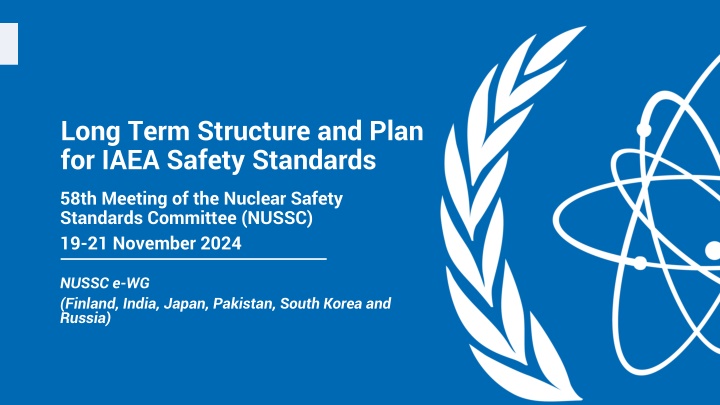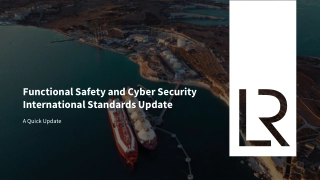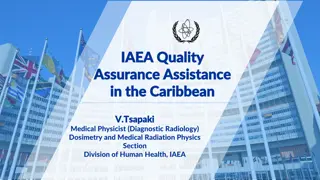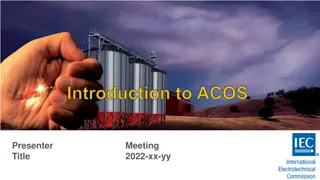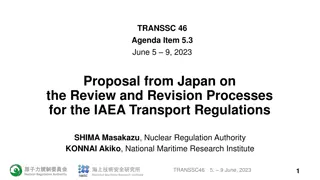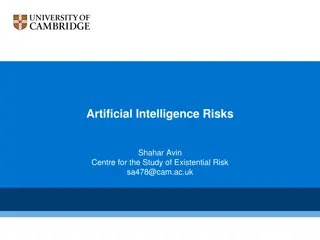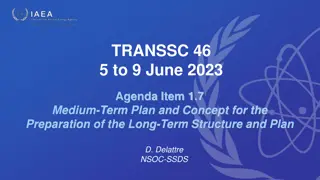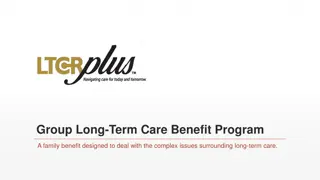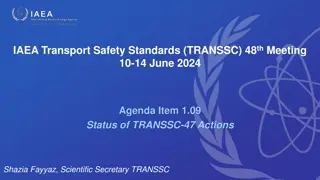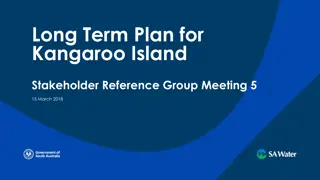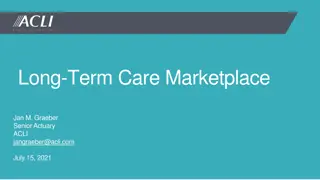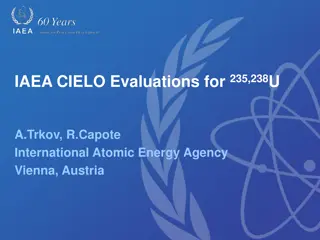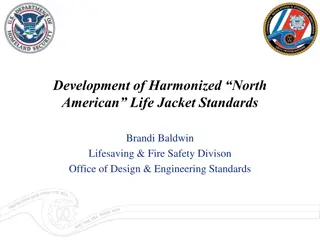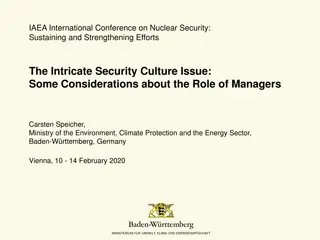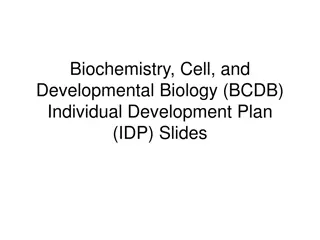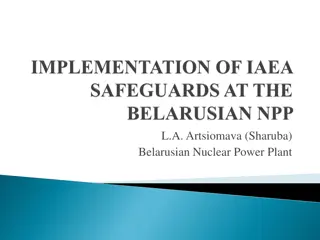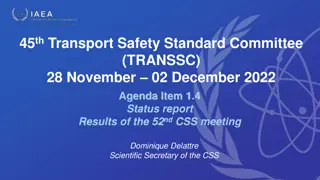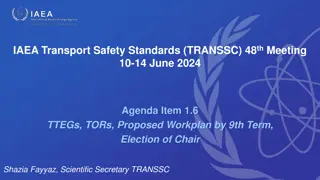IAEA Safety Standards Meeting 2024: Long-Term Plan Development
The 58th Meeting of the Nuclear Safety Standards Committee focuses on creating a new long-term structure and plan for IAEA Safety Standards. The report outlines inputs from member states, including evaluations, plans for new nuclear power plants, integration of emerging technologies, and addressing political, economic, and social factors impacting safety standards. Recommendations cover areas like transportation of nuclear material, safety standards revision, climate change, and decommissioning management.
Download Presentation

Please find below an Image/Link to download the presentation.
The content on the website is provided AS IS for your information and personal use only. It may not be sold, licensed, or shared on other websites without obtaining consent from the author.If you encounter any issues during the download, it is possible that the publisher has removed the file from their server.
You are allowed to download the files provided on this website for personal or commercial use, subject to the condition that they are used lawfully. All files are the property of their respective owners.
The content on the website is provided AS IS for your information and personal use only. It may not be sold, licensed, or shared on other websites without obtaining consent from the author.
E N D
Presentation Transcript
Long Term Structure and Plan for IAEA Safety Standards 58th Meeting of the Nuclear Safety Standards Committee (NUSSC) 19-21 November 2024 NUSSC e-WG (Finland, India, Japan, Pakistan, South Korea and Russia)
Background/Summary The Previous Long-Term structure and plan for IAEA Safety Standards established in 2008 is near completion. New structure and plan being developed will be expected to be finalized in 2026. The new plan will guide the development of Safety Standards for the next 10 15 years, with inputs from Review Committees and IAEA Member States. CSS developed a questionnaire to collect inputs from its members and representatives of the States in the Safety Standards Review Committees. The Nuclear Safety Standards Committee (NUSSC) formed an e-Working Group (e-WG) comprising of representatives from Finland, India, Japan, Pakistan, South Korea and Russia under leadership of NUSSC Chair to seek input for this plan. The e-WG created a survey questionnaire, which was open to NUSSC members from July 12, 2024, to October 15, 2024, receiving 29 responses. The e-WG analysed the survey responses, compiled a draft report, consisting of a main section and an appendix detailing individual questions and responses. 2
Structure of the Report INTRODUCTION CONCLUSIONS Part 1 CSS Questionnaire Part 2 -NUSSC Led IAEA Safety Standards Part 3 IAEA Process for Developing Safety Standards NUSSC RECOMMENDATIONS 3
Conclusion Part 1 CSS Questionnaire (1/2) Member States carry out operating environment evaluation in national or regulatory body level up to date regulatory framework as per national needs Plans to construct large GEN III(+), land and marine-based GEN IV NPPs Expected use of emerging technology in nuclear power design, manufacturing, construction, operation, and maintenance management Significant impact of political, economic, and social factors on Safety Standards Integrate security in safety framework digital systems, cyber security due to AI Safety security interface design and construction phase, sharing best practices, training and Human Factors Engineering (HFE) 4
Conclusion Part 1 CSS Questionnaire (2/2) Transportation of nuclear material fuelled reactors Revision of safety standards - GEN III(+) experience, addressing climate change, introduction of new technologies, more practical and applicable for SMR, innovative (including transportable) and floating NPPs, post closure monitoring of disposal sites (specific guidance), crises and contingency planning, gaps in IAEA Safety Standards and industry practices/standards, legacy sites and decommissioning management 5
Conclusion Part 2 NUSSC Led Safety Standards (1/2) Present structure of IAEA Safety Standards fit (robust) for Generation I to III plus land based NPPs, flexible and technology-neutral - New technologies (unique safety aspects of Generation IV technologies, e.g. molten salt reactors, lead-cooled reactors) and topic (e.g. design and operation of transportable reactors, behaviour of high temperature materials, AI, deep learning in decision making, climate change impact, new business models, PSA/DSA for multi unit sites) may be incorporated in safety standards Current safety standards falls short (and require new SSR) - marine-specific risks and regulatory challenge (liability in international waters, no fixed sites) Risks from pandemics, conflicts, supply chain disruptions, and other types of crisis situations highlighted as important considerations for future standards. 6
Conclusion Part 2 NUSSC Led Safety Standards (2/2) Diverse opinions regarding adequacy of safety standards for fusion (research, power plants, etc.) GSR address some aspects (currently enough considering evolution of technology), specific demands are not fully covered, need for dedicated safety documents (TECDOC-level), new SSR or SSG (based on ITER and other projects operational experience) Need manufacturing technologies and NPP remote operation (possible opportunities to enhance IAEA Safety Standards) to develop TECDOC-level documentation regarding advance Simplification and streamlining of IAEA Safety Standards - enhance user friendliness Opportunity for improving standards - collaboration (technology developers and regulators) and utilizing insights of new operational experiences 7
Conclusion Part 3 IAEA Process for Developing Safety Standards SPESS B process ensures high-quality Safety Standards - perceived as lengthy, sometimes repetitive and challenges timely development of the Safety Standard; possibility to simplify/combine certain steps to reduce redundancy maintaining quality Consensus based process appreciated - better coordination (utilizing IT tools) among stakeholders could improve communication and efficiency Opportunities to enhance the SPESS B process - more inclusive process integrating Member States' feedback, fast-track process to handle minor or urgent updates, structured periodic review process to respond to rapid technological changes, reducing redundancy in the preparation steps, providing educational resources to Member States for seeking higher-quality feedback during the reviews 8
Recommendations for Long term planning and NUSSC led IAEA Safety Standards (1/12) R1 GEN I TO III+ NPPS AND LTO IAEA should consider ensuring that very good operating experience of the IAEA Safety Standards for land-based Generation I to III plus nuclear power plants is considered in the planning of the Long-Term structure of the IAEA Safety Standards and ensuring that the future structure continues to support the construction and Long-Term operation of land-based Generation I to III plus nuclear power plants. 9
Recommendations for Long term planning and NUSSC led IAEA Safety Standards (2/12) R2 ROAD MAP FOR ADVANCED REACTORS AND INTEGRATION OF NEW TECHNOLOGIES IAEA should consider developing and integrating in Long-Term planning a road map for advanced reactors and integration of new technologies based on TECDOC-level documents and associated gap-analysis. 1. Focused for revision of existing Safety Standards to make them more practical and applicable for SMRs, innovative (including transportable), floating NPPs and 2. Decommissioning and ageing management, along with security measures for nuclear legacy fuel cycle facilities sites. 3. The new prevailing technologies such as application of AI in nuclear power design, manufacturing, operation, and maintenance management. 10
Recommendations for Long term planning and NUSSC led IAEA Safety Standards (3/12) R3 GEN IV NPPs (1/2) IAEA should consider the following identified needs related to GEN IV NPPs while developing the road map for advanced reactors and integration of new technologies: 1. Develop Technology-Specific Safety Guides that address the unique features of Generation IV reactors, such as coolant chemistry programs and equipment corrosion protection. 2. Strengthen Probabilistic Safety Assessments (PSA): Facilitate international collaboration to collect and analyse operational data, supporting more robust PSA frameworks for Generation IV reactors. 11
Recommendations for Long term planning and NUSSC led IAEA Safety Standards (4/12) R3 GEN IV NPPs (2/2) 3. Incorporate New Materials and Safety Concepts: Develop the Safety Guides on material behaviour under high-temperature conditions for non-water-cooled reactors. 4. Continuously update the Safety Guides using lessons learned from early operating experiences of Generation IV reactors and SMRs. 5. Foster International Collaboration: Promote engagement between Member States, regulators, and technology developers to align Safety Standards with technological advancements. 12
Recommendations for Long term planning and NUSSC led IAEA Safety Standards (5/12) R4 MARINE BASED (FLOATING) FACILITIES IAEA should consider incorporating Marine-based (floating) facilities with reactors into IAEA Safety Standards. The following topics should be considered in the development: 1. Develop a Dedicated SSR for Marine-based Facilities 2. Provide Guidance on Transportation and Deployment 3. Incorporate Marine Expertise into Standards Development 4. Address Regulatory Gaps for Marine-based (floating) Facilities 5. Collaborate on Liability Frameworks for International Operations 6. Update Testing and Safety Assessments for Marine Conditions 13
Recommendations for Long term planning and NUSSC led IAEA Safety Standards (6/12) R5 FUSION FACILITIES (1/2) IAEA should consider incorporating fusion reactors in the Long-Term planning of the IAEA Safety Standards in a timely manner. IAEA should consider the following issues while planning: 1. Develop targeted guidance: The IAEA should explore the development of an SSG covering fusion facilities to meet existing GSR and other Safety Standards, with a focus on radiation protection and operational safety. 2. Monitor progress on fusion projects: Maintain close engagement with international projects like ITER, and continuously gather lessons learned to determine if and when an SSR for fusion facilities will be necessary. 14
Recommendations for Long term planning and NUSSC led IAEA Safety Standards (7/12) R5 FUSION FACILITIES (2/2) 3. Foster international collaboration: Encourage the involvement of stakeholders through working groups and consultations to ensure alignment and readiness for future deployment of fusion developments technologies. 15
Recommendations for Long term planning and NUSSC led IAEA Safety Standards (8/12) R6 SAFETY-SECURITY INTERFACE (1/2) IAEA should consider improving the safety-security interface in the IAEA Safety Standards by: 1. Developing Specific Safety Guides on Safety-Security Interfaces 2. Expanding Cybersecurity Standards 3. Encouraging the early incorporation of safety and security measures in the design phase to ensure effective risk mitigation. 4. Developing updated standards for the safe and secure transportation of nuclear materials, with specific focus on fuelled SMRs and co-generation facilities. 16
Recommendations for Long term planning and NUSSC led IAEA Safety Standards (9/12) R6 SAFETY-SECURITY INTERFACE (2/2) 5. Providing guidance on Long-Term monitoring and security for radioactive waste disposal sites and decommissioned facilities. 6. Facilitating cross-border collaboration to share knowledge and develop harmonized safety-security standards. 7. Promoting capacity-building initiatives to ensure personnel are well-prepared to handle safety and security challenges effectively. 17
Recommendations for Long term planning and NUSSC led IAEA Safety Standards (10/12) R7 ALL HAZARDS APPROACH AND RISK MANAGEMENT (1/2) IAEA should consider incorporating all hazards approach and risk management into IAEA Safety Standards. IAEA should consider the following aspect: 1. Incorporate Lessons Learned from Recent Crises: The IAEA should integrate lessons from the armed conflict, pandemics including Covid-19 and other types of crisis situations into Safety Standards to strengthen crisis preparedness. 2. Develop Crisis Management Guidelines: Issue specific guidance on contingency planning, including staffing plans and supply chain resilience for non-traditional crises. 18
Recommendations for Long term planning and NUSSC led IAEA Safety Standards (11/12) R7 ALL HAZARDS APPROACH AND RISK MANAGEMENT (2/2) 3. Promote Risk-Informed Hazard Assessments: Encourage Member States to adopt a risk-informed approach to identify and prioritize hazards most relevant to their nuclear operations. 4. Ensure Regulatory Flexibility: Build flexibility into safety standards to allow adaptive responses during unexpected crises, ensuring both safety and operational continuity. 5. Enhance International Collaboration: Foster collaborative initiatives among Member States to exchange best practices on managing nuclear safety during pandemics and other types of crisis situations. 19
Recommendations for Long term planning and NUSSC led IAEA Safety Standards (12/12) R8 LONG TERM PLANNING AND NUSSC PRIORITIES IAEA should consider setting high priority in long term planning to the following topics: 1. Developing a road map for IAEA Safety Standards for advanced reactors and integration of new technologies (R2) and (R3) 2. Developing IAEA Safety Standards for safety-security interface (R6) 3. Incorporating all hazards approach and risk management in IAEA Safety Standards (R7) 4. Considering the impact of climate change and prevention of counterfeit, fraudulent, and suspect items (CFSI) in use of nuclear energy 20
Recommendations For IAEA Process for developing Safety Standards (1/3) R9 ENHANCEMENT OF SPESS B PROCESS (1/2) IAEA should consider further enhancing the IAEA Safety Standards development process SPESS B and consider the following identified opportunities: 1. Introduce a Formal Review Cycle 2. Develop a Fast-Track Amendment Process 3. Leverage IT Tools and Streamline Process 4. Improve Feedback Mechanisms 5. Provide Educational Support for Member State 21
Recommendations For IAEA Process for developing Safety Standards (2/3) R9 ENHANCEMENT OF SPESS-B PROCESS (2/2) 6. Introduce Feedback Mechanisms for Deviations 7. Optimize Member State Engagement 8. Balance Thoroughness with Efficiency 9. Avoid and reduce the overlapping and duplication in the IAEA Safety Standards. 22
Recommendations For IAEA Process for developing Safety Standards (3/3) R10 EMPLOYMENT OF IT-TOOLS AND AI TECHNOLOGY IN IAEA SAFETY STANDARDS DEVELOPMENT IAEA should consider employing IT-tools and AI technology in IAEA Safety Standards development by introducing: 1. AI and ML technologies to improve the usability of NSS-OUI. 2. Chatbots for User Support 23
